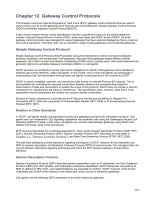Control Flow Statements
Bạn đang xem bản rút gọn của tài liệu. Xem và tải ngay bản đầy đủ của tài liệu tại đây (71.22 KB, 6 trang )
29
odd-looking statement that computes
s
is nearly the same
as
s=sign(d(i))
, except that here we want
s
to be one
when
d(i)
is zero. We will come back to this diagonal
dominance problem later on.
6. Control Flow Statements
In their basic forms, these MATLAB flow control
statements operate like those in most computer languages.
Indenting the statements of a loop or conditional
statement is optional, but it helps readability to follow a
standard convention.
6.1 The for loop
This loop:
n = 10
x = []
for i = 1:n
x = [x, i^2]
end
produces a vector of length
10
, and
n = 10
x = []
for i = n:-1:1
x = [i^2, x]
end
produces the same vector. Try them. The vector
x
grows
in size at each iteration. Note that a matrix may be empty
(such as
x=[]
). The statements:
m = 6
n = 4
for i = 1:m
for j = 1:n
30
H(i,j) = 1/(i+j-1) ;
end
end
H
produce and display in the Command window the
6
-by-
4
Hilbert matrix. The last
H
displays the final result. The
semicolon on the inner statement is essential to suppress
the display of unwanted intermediate results. If you leave
off the semicolon, you will see that
H
grows in size as the
computation proceeds. This can be slow if
m
and
n
are
large. It is more efficient to preallocate the matrix
H
with
the statement
H=zeros(m,n)
before computing it. Type
the command
doc
hilb
and
type hilb
to see a more
efficient way to produce a square Hilbert matrix.
Here is the counterpart of the one-dimensional indexing
exercise from Section 5.6. It adds
99
to each entry of the
matrix that is larger than
.5
, using two
for
loops instead
of a single
find
. This method is slower:
A = rand(3)
[m n] = size(A) ;
for j = 1:n
for i = 1:m
if (A(i,j) > .5)
A(i,j) = A(i,j) + 99 ;
end
end
end
A
The
for
statement permits any matrix expression to be
used instead of
1:n
. The index variable consecutively
assumes the value of each column of the expression. For
example,
31
s = 0 ;
for c = H
s = s + sum(c) ;
end
computes the sum of all entries of the matrix
H
by adding
its column sums (of course,
sum(sum(H))
does it more
efficiently; see Section 5.3). Each iteration of the
for
loop assigns a successive column of
H
to the variable
c
.
In fact, since
1:n
=
[1 2 3
...
n]
, this column-by-
column assignment is what occurs with
for
i
=
1:n
.
6.2 The while loop
The general form of a
while
loop is:
while
expression
statements
end
The
statements
will be repeatedly executed as long as
the
expression
remains true. For example, for a given
number
a
, the following computes and displays the
smallest nonnegative integer
n
such that
2
n
>
a
:
a = 1e9
n = 0
while 2^n <= a
n = n + 1 ;
end
n
Note that you can compute the same value
n
more
efficiently by using the
log2
function:
[f,n] = log2(a)
You can terminate a
for
or
while
loop with the
break
statement and skip to the next iteration with the
32
continue
statement. Here is an example for both. It
prints the odd integers from 1 to 7 by skipping over the
even iterations and then terminates the loop when
i
is 7.
for i = 1:10
if (mod(i,2) == 0)
continue
end
i
if (i == 7)
break
end
end
6.3 The if statement
The general form of a simple
if
statement is:
if
expression
statements
end
The
statements
will be executed only if the
expression
is true. Multiple conditions also possible:
for n = -2:5
if n < 0
parity = 0 ;
elseif rem(n,2) == 0
parity = 2 ;
else
parity = 1 ;
end
disp([n parity])
end
The
else
and
elseif
are optional. If the
else
part is
used, it must come last.
33
6.4 The switch statement
The
switch
statement is just like the
if
statement. If
you have one expression that you want to compare
against several others, then a
switch
statement can be
more concise than the corresponding
if
statement. See
help
switch
for more information.
6.5 The try/catch statement
Matrix computations can fail because of characteristics of
the matrices that are hard to determine before doing the
computation. If the failure is severe, your script or
function (see Chapter 7) may be terminated. The
try
/
catch
statement allows you to compute
optimistically and then recover if those computations fail.
The general form is:
try
statements
catch
statements
end
The first block of statements is executed. If an error
occurs, those statements are terminated, and the second
block of statements is executed. You cannot do this with
an
if
statement. See
doc
try
. See Section 11.5 for an
example of
try
and
catch
.
6.6 Matrix expressions (if and while)
A matrix expression is interpreted by
if
and
while
to be
true if every entry of the matrix expression is nonzero.
Enter these two matrices:
A = [ 1 2 ; 3 4 ]
B = [ 2 3 ; 3 5 ]









